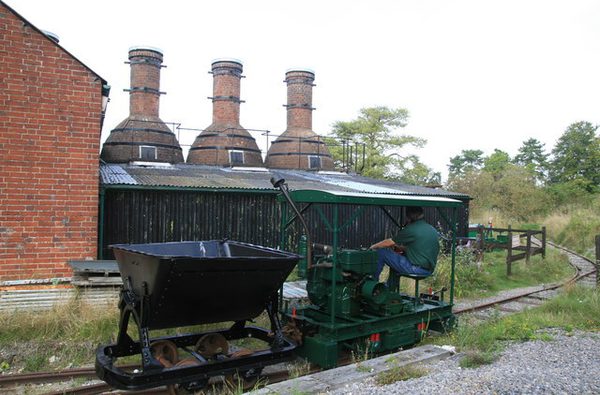Winchester district is well known for its history and heritage with trails and tours aplenty and museums dedicated to a myriad of subjects. The city and district were historically built around the natural flow of the River Itchen, from Hinton Ampner up towards Alresford, through the city and down to Southampton and the Solent. The river was not only a useful and direct travel route for visitors and residents, but also the life blood of the ancient capital – milling flour and animal feed, laundering and creating cloth and of course providing drinking water. A surprising amount of history remains on these waterways, if you know where to look!
Winchester City Mill
Winchester City Mill is a working water mill dating back to at least Saxon times; City Mill is probably the oldest working watermill in the UK. The River Itchen flows through this historic water mill, where you can watch the water wheel working and witness corn milling demonstrations throughout the year.
It was originally known as Eastgate Mill because it lay just outside the east gate of the city of Winchester, but was renamed City Mill when it was given to the city by Mary I, following her marriage to Philip II of Spain.
During World War I the mill was used as a laundry, then became derelict. In 1928 the building was at risk of demolition; but it was saved by a group of benefactors who bought the mill and presented it to the National Trust who spent 12 years bringing it back to its former glory.
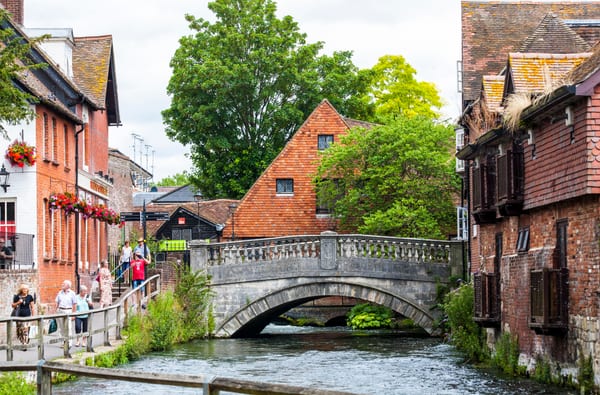
Chesapeake Mill
There has been a mill in Wickham at least since the time of the Domesday survey in 1086. The present building dates from 1820. It was built using timbers salvaged from the USS Chesapeake.
During the 20th century, the original water wheels were replaced by a water turbine, followed by a steam-powered engine. By the 1970s the mill was used to produce animal feed. Grinding ceased in 1986 and then, being used only for grain and fertiliser storage, the mill formally closed in 1991.
The mill now serves as a retail centre for antique and gift sellers. However, if you are looking to learn more, there is a heritage room inside the mill where you can discover more of the history of the USS Chesapeake and Wickham, including old photographs and memorabilia.
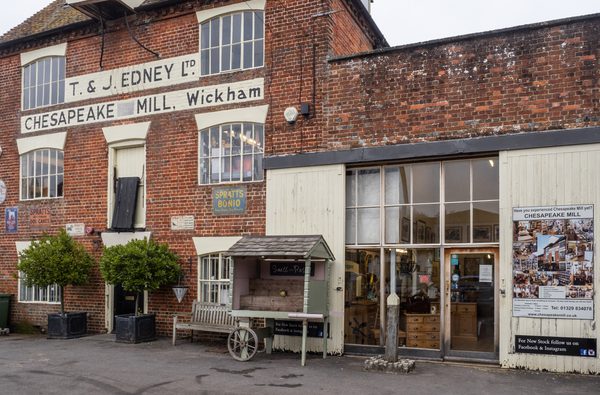
Alresford Mills
Alresford is a hot spot for former water mills. Many were corn mills and laundries but Alresford also has fulling mills dating back to the 13th century.
Cloth fulling is a process originally conducted by human feet, kneading cloth in shallow ‘fullers earth’ streams, to tighten and shrink the cloth, resulting in a tightly woven end product. Many fulling mills fell into disrepair in the 19th century when large industrial mills became more widely used, using mechanical processes, rather than human feet!
The fulling mill in Alresford was converted into a private house in 1951, retaining much of the medieval timber and thatching. A beautiful garden was added and is now a popular photography spot for residents and visitors.
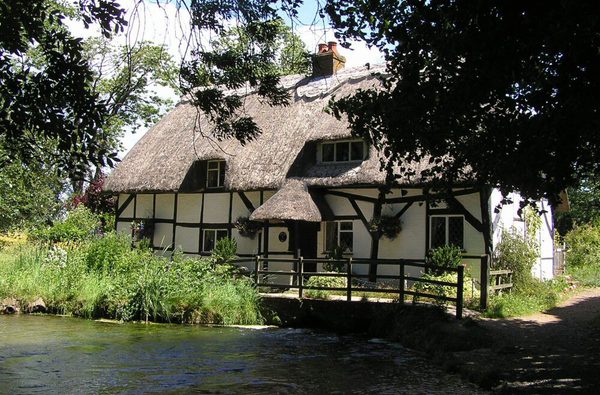
Hockley Mill
Hockley is a three storey brick water mill with tiled roof built in 1803 with an adjoining barn (now housing).
The mill still contains a working iron Poncelet style waterwheel which drives an unusual horizontal timber mainshaft designed primarily to drive barn machinery. Two pairs of stones remain and the mostly wooden machinery for their operation is intact but not used.
The mill is looked after by the Hampshire Mills group and is often open during Heritage Open Days and Mills weekends. You can also contact Hampshire Mills to request a tour.
John Brandrick, a retired Draughtsman, has devoted considerable time and expertise in making 3D drawings to record the structure and machinery of mills. He visited Hockley mill and produced detailed drawings of the intricate mechanics which can be seen online here.
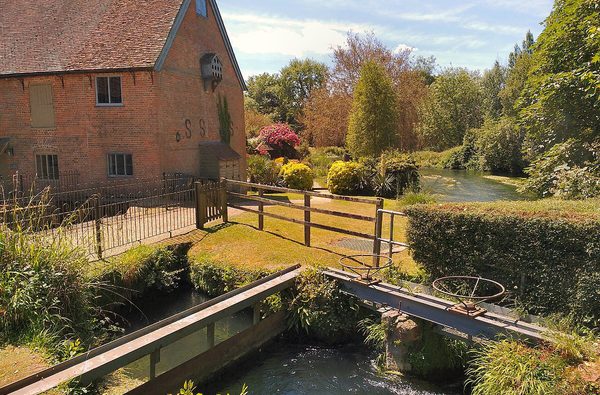
Twyford Waterworks
Discover the history of drinking water at Twyford Waterworks. An Edwardian pumping station, constructed between 1898 and 1935, with a unique array of buildings and machinery. The Waterworks is still operational and supplies five million gallons of water every day!
It also retains nearly all its original equipment, a highlight is the 2ft gauge railway which transports materials around the site, which was laid soon after the site opened, much of this railway remains in place today along with a new track. Skip wagons were used for all operations, pushed by hand on the level sections and pulled by rope up the inclines. Visitors can enjoy demonstrations of typical small locomotives shunting a variety of wagons.
The site has been carefully restored and is managed by the Twyford Waterworks Trust volunteers and the artefacts help to tell the story of water extraction, softening, and supply.
